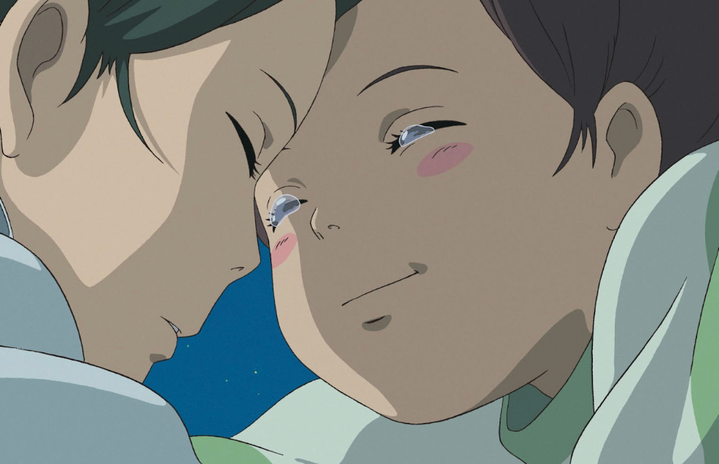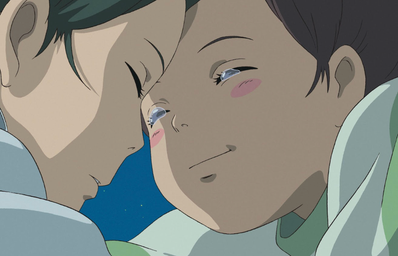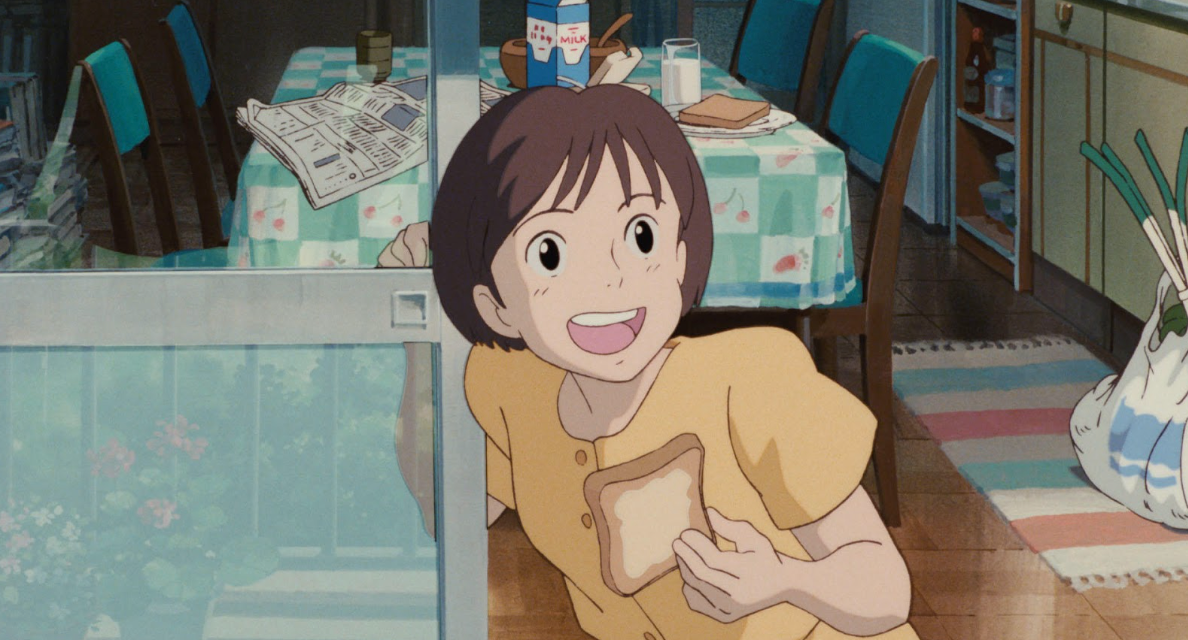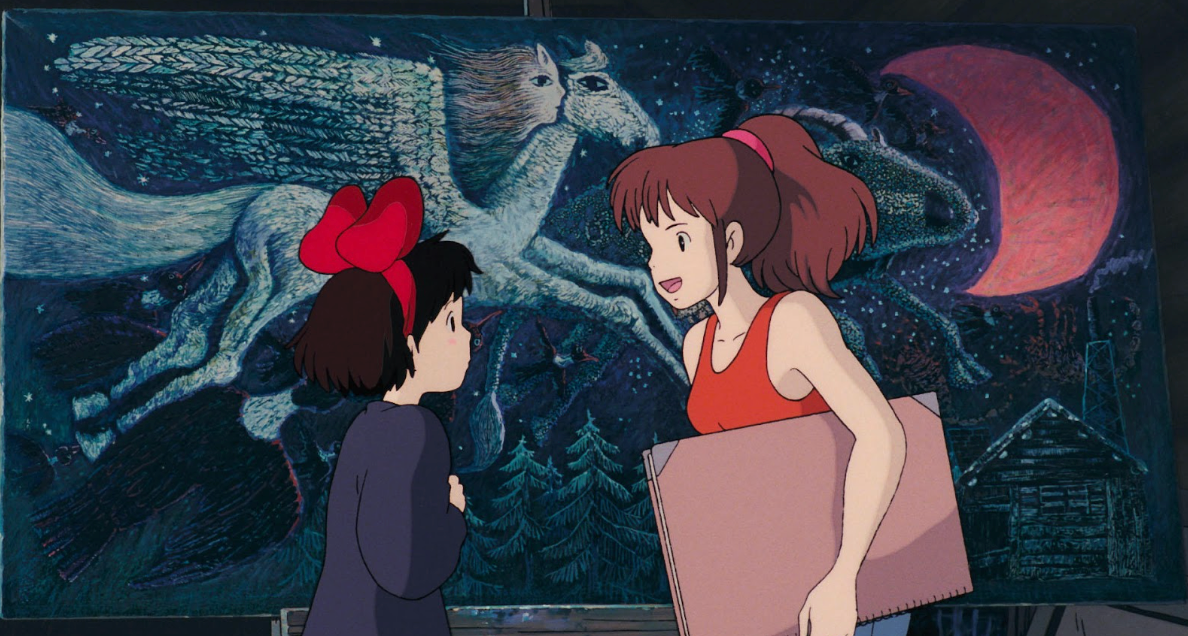Since its inception in 1985, Studio Ghibli has become one of the most celebrated animation studios in the world. With his simplistic yet beautiful art style, driven and personable characters, and wondrous worldbuilding, co-founder and filmmaker Hayao Miyazaki has managed to breathe life into the mundane in ways that resonate with audiences all over the world, regardless of age, gender, and situation. At the age of twenty, I still find comfort and warmth in “My Neighbor Totoro”, or run to watch “Spirited Away” after a long week of tiring assignments and midterms. These movies may be targeted towards children, but they tell stories that can resonate with anyone.
In its endless list of ingredients to creating a well-made and celebrated story, Ghibli has one consistent theme that stands out: strong female leads. Miyazaki’s films are led by girls full of passion, will, and life. They tell their own tales and forge their own paths. They are authentic and flawed in the same way real girls are.
In most East Asian media, it’s common for female characters to be perpetuated into a particular stereotype, using big eyes, sexualized bodies, and helplessness to brand them as “women.” Even in Western media, it’s prevalent to have men and women defined by particular traits that have been standardized to relate to “male” or “female.” Ghibli takes these stereotypes and throws them out the window–women in Ghibli come in all shapes, have all kinds of personalities and flaws, and are far more than just damsels in distress.
Feminism without robbing femininity
Miyazaki started off with “Nausicaä of the Valley of the Wind” in 1984, introducing a young female character with traits that were, at the time and even now, commonly attributed to men–she was strong-willed, perseverant, relentless, and independent. Next to these traits, she was sensitive, graceful, and intelligent. Despite growing up in a time when women in media were commonly represented as weak and helpless, only to be saved by strong and powerful men, Miyazaki transformed what it means to be a female in film.
Miyazaki continued this with his other female leads: In “Laputa: Castle in the Sky” (1985), Sheeta is a quiet and soft-spoken girl, but that doesn’t stop her from fighting for herself from her kidnapper, being driven and passionate, and saving her magical kingdom of Laputa. Likewise, Chihiro of “Spirited Away” (2001) is an anxious, whiny, and sensitive girl, who must put aside her fears to help save her parents from an evil curse, and befriends many people along the way. Kiki in “Kiki’s Delivery Service” (1989) is a 13-year old witch who must go out into the unknown world to support herself, and learns to work to make a living and gains support from those around her even when she begins to lose her ambitions and self-worth. Additionally, Sophie of “Howl’s Moving Castle” is a mature and caring woman who feels she lacks beauty and isn’t special, only to discover her true worth and beauty while saving the wizard Howl from his treacherous fate, and saving herself from a curse.
My main issue with a lot of “strong” female characters in media has always been that most of the time, “strong” equates to either “manly”, or to sexuality and “the male gaze” as their main source of strength and power. Although these are both roles to be respected and valued, they do not represent every girl. One of the earliest things I noted in Ghibli’s girls was that even with the addition of strength, determination, and power, these girls were not robbed of their girlhood and femininity. These women are soft, caring, and creative. They can be clever or naive, mature or childlike, strong willed or sensitive, and they are still women with strength, will, and their own stories. In Ghibli, gender is not categorized–it is created. These women choose their own ways to define their identity as women and as individuals.
Women Supporting Women: The Bonds of Sisterhood
Beyond the main leads of these stories, Miyazaki creates women that are not the center of the plot, yet are just as special and well-written. When the female leads are lost, struggling, and need help, other characters come in to guide them–other women. Ghibli has a common theme of introducing mother-figures and older sister-figures to help our main characters find themselves and become what they wish to be. Kiki is given a place to stay and work by a gentle and bright woman named Osono, who plays the role of a mother to her, comforting her, giving her advice and support, and looking out for her when Kiki struggles and feels low. Kiki also befriends Ursula, an unruly and independent girl who follows her passions and helps Kiki through her toughest times. Sophie is placed under a curse by a vain and heartbroken witch, and after learning of her past and seeing her true self, she takes care of the old woman and shows her kindness and sympathy. In Princess Mononoke (1997), San is raised by the god Moro, a divine wolf who mothers and nurtures her, raising her as one of her own despite the fact that San is a human by birth, and teaching her the value and importance of maintaining the forestland and protecting the animals and nature from the greed of others.
Ghibli women have the flaws and difficulties that every real girl has, and Miyazaki introduces other women to play motherly and sisterly roles in each other’s lives, giving and gaining support and love from each other. The women of Ghibli experience their own challenges and losses, yet find peace and comfort from seeing their challenges, feelings, and joys reflected in one another.
Male Interests in the World of Ghibli
Most Ghibli movies have a common theme of a male character who supports the female lead’s journey, but does not overpower them or save them. Ponyo from “Ponyo” (2008) leaves her life as a sea creature behind to live with her friend Sousoke, who is kind to her and makes her happy. Chihiro is guided through a magical and dangerous world with the support of her friend Haku, who she met in her childhood in a different form. In “Kiki’s Delivery Service”, Kiki befriends the nerdy and enthusiastic Tombo, who gives her happiness and motivation even when she loses her ability to fly. Male characters are relevant to the story and form invaluable relationships with the female characters, but neither character takes away from the other.
Although many works of fiction tend to wrongly characterize female strength and being in love as antonyms, Ghibli does not fall into this trap. In Ghibli, having love and affection does not keep women from being strong and courageous–rather, it encourages it. Sophie enters a magical world of wizards and witches and falling stars to save her love Howl. San is an angry and hot-headed girl who learns of the kindness and love among humans through a boy named Ashitaka. Shizuku of “Whisper of the Heart” (1995) struggles to follow her passions at first, but gains support and motivation from her love and friendship with Seiji.
Ghibli stands against the outdated stereotype that women cannot pursue love unless they are dependent on men, and does not work to represent men and women as categorical labels of their genders. Ghibli’s characters are well-rounded and are soft, undaunted, caring, brave, and loving no matter what gender they are.
Women in Ghibli, Women in Reality
Historically, Studio Ghibli has always emphasized the relevance of creating feminist films, with brave and independent female characters that look and act like real girls. These girls take on their responsibilities, stand up to challenges, and support each other. Although Studio Ghibli may just be considered animated works for children to enjoy, these films resonate with audiences of much more age and background, particularly women. For little girls, growing up with strong female leads in their favorite movies creates ideal role models for girls to feel empowered and confident in their own selves and their abilities, telling them that the world is a big place and they can pursue anything they want. For women like me who are stepping into adulthood, these movies are a warm embrace.
In your twenties, while trying to get through campus life, academics, social relationships, and the occasional soul-searching, life is tiring, but it is also valuable and exciting. I have gained support and love from so many people in my life, and so many women–the women of Ghibli remind me how grateful I am to be a girl, and to live and grow amongst other girls, laughing with them and learning from them. Through Ghibli, I have developed an appreciation for the mundane life I live everyday, and have found excitement and relevance in my everyday life knowing one thing–I am a woman, and I’m proud to be a woman.
Sometimes, when I’m commuting home after an exhausting day, I look outside the bus window and picture everything I see in a Ghibli-animation style–suddenly, the traffic and honking is just another clip out of “Whisper of the Heart”. The smokey factories going by are drawn simplistically, and are brightly coloured. I’m a girl in a Ghibli film, and I have magic and wonders to look forward to.





